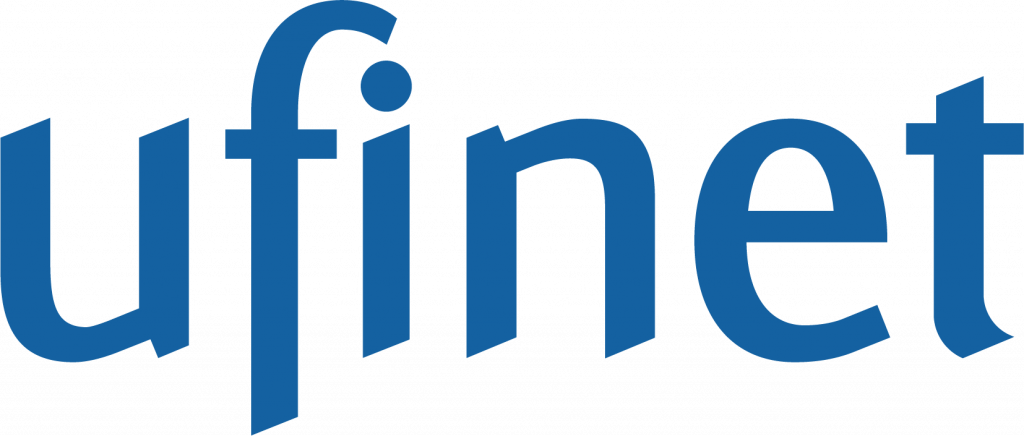The constant evolution of connectivity technologies has revolutionized the Internet landscape, and in this context, fiber optics emerges as a fundamental backbone for the efficient delivery of Internet services, especially for Internet Service Providers (ISPs). Fiber optics, with its exceptional ability to transmit data at astounding speeds, has transformed the way ISPs deliver connectivity services, providing a robust and reliable infrastructure that powers the digital age.
Today, Internet distribution for ISPs has become synonymous with the strategic deployment of fiber optic networks, a technology that uses glass or plastic wires to transmit data using pulses of light. This advanced approach to connectivity has gained ground due to its ability to offer exceptional transmission speeds and greater efficiency compared to more traditional technologies. Fiber optics has become not only the technological backbone, but a vital element in keeping ISPs at the forefront of modern connectivity.
At the heart of fiber-optic-based Internet distribution is the FTTH (Fiber to the Home) network, which brings high-speed connectivity directly to end-users’ homes. This model, supported by a passive and active infrastructure, offers an end-to-end solution for ISPs. From the central office to the end user’s home, fiber optics not only traces a network of exceptional speeds, but also ensures robust and reliable connectivity. The implementation of passive and active models in Internet distribution allows ISPs to adapt to the specific demands of their market and provide customized services to their customers. The crucial role of fiber optics in Internet distribution for ISPs, addressing its distinctive features, challenges and emerging trends in this exciting technology landscape.
Advantages of fiber optics for ISPs
In the world of Internet Service Providers (ISPs), the choice of connectivity technology is a critical factor that defines operational success. In this context, fiber optics is an unparalleled option, offering fundamental advantages that drive excellence in Internet distribution. The adoption of fiber optics by ISPs not only responds to the need for faster transmission speeds, but also embraces a number of strategic benefits that transform the way connectivity services are delivered.
One of the most outstanding advantages of fiber optics for ISPs is its ability to provide exceptional data transmission speeds. Unlike conventional technologies, fiber optics allows data transmission through pulses of light, bringing Internet speeds to astounding levels. This feature not only satisfies the growing bandwidth demands of end users, but also positions ISPs to offer high quality services in an increasingly demanding digital environment.
Another key benefit is the inherent reliability of fiber optics. Data transmission through glass or plastic wires ensures a more stable connection that is resistant to external interference, such as electromagnetic interference. This reliability translates into a lower probability of service interruptions, which directly contributes to customer satisfaction and strengthens the ISP’s reputation in the market. In a digital world where consistency and reliability are imperative, fiber optics emerges as the logical choice for ISPs looking to excel in Internet distribution.
In addition, fiber optics offers greater scalability. The demand for higher bandwidth is a constant in the digital evolution, and fiber optics gives ISPs the flexibility to expand their infrastructure without compromising quality of service. This ability to grow seamlessly allows ISPs to adapt quickly to changing market needs and ensure they are equipped to meet future challenges.

Exploring FTTH network models: passive and active in the fiber optic universe
Fiber optic Internet distribution has revolutionized connectivity in Latin America, with UFINET at the forefront of this transformation. FTTH (Fiber to the Home) technology is emerging as a strategic option for operators in the region, and within this strategy, UFINET offers two FTTH network models: the passive model and the active model.
Passive Model: Efficiency and Scalability In the passive model, UFINET offers an ODN (Optical Distribution Network) service managed through dedicated PON (Passive Optical Network) trees, using fiber optic technology. This efficient and scalable approach allows the connection of end users in specific coverage areas through the implementation of the active network, where the UFINET customer assumes the responsibility of lighting the optical fiber in the network, with an OLT located at the Central Office and an ONT at the end user’s home. This process highlights the versatility of fiber optics in transmitting data effectively and reliably.
This model stands out for its high efficiency, using optimized splitters for GPON customers even with low fiber penetration. It offers flexibility with a UFINET proprietary ODN network model, while OLT and ONT are operator-owned and designed to take full advantage of fiber optic capabilities. Point-to-multipoint topology with logical point-to-point connection ensures efficient use of fiber optic resources.This ensures effective and reliable data transmission throughout the system.
Advantages of the passive model:
Cost efficiency
Optimized use of splitters ensures efficiency even at low penetration levels.
Scalability:
Point-to-multipoint topology allows for efficient expansion.
Active model: Simplicity of Management In the active model, UFINET provides a bit stream (capacity) backed by the GPON FTTH network, from the Central Office to the end user’s home. Here, UFINET owns and operates both passive and active infrastructure. This approach simplifies management for the customer, eliminating the need to manage the active network.
The decision between passive and active models depends on the operator’s penetration expectations and financial preferences. The passive model, by making use of fiber optic technology, offers significant cost efficiency and scalability. Meanwhile, the active model, with its focus on fiber optics, provides simplicity and total end-to-end control for the operator. The strategic choice between these models highlights the versatility and effectiveness of fiber optics in network deployment decisions.
Advantages of the active model:
Simplification of management:
UFINET handles both passive and active infrastructure, facilitating the operation for the customer.
Total control:
The customer has complete end-to-end control over the network.
The point-to-multipoint topology, common to both variants, underscores the fiber-optic nature of FTTH connectivity. Each end user has a logical point-to-point connection, which means that fiber optics allows precise transmission of data destined for specific users.
Strategic choice: passive vs. active
The choice between passive and active models becomes crucial for operators. If cost efficiency and scalability are priorities, the passive model emerges as the preferred choice. On the other hand, if management simplification and total control are paramount, the active model offers an attractive alternative.
Both models align with UFINET’s vision of providing true end-to-end FTTH solutions. Fiber optics, in its central role, ensures the efficient delivery of Internet services to end users.
Implementation of FTTH Networks by UFINET: unraveling digital transformation
The proliferation of connectivity in Latin America has been boosted by UFINET’s strategic implementation of FTTH (Fiber to the Home) networks. This initiative has marked a milestone in the region’s digital transformation, positioning fiber optics as the fundamental pillar for the efficient delivery of Internet services. UFINET has carried out the implementation of FTTH networks, highlighting the crucial importance of fiber optics in this innovative process.
The FTTH revolution in Latin America
The adoption of FTTH networks has been a key catalyst in Latin America’s digital revolution, enabling high-speed and reliable connectivity based on fiber optic technology. UFINET, with its vast experience and far-reaching network deployed over the years, has led this change by offering open and neutral solutions to all operators in the region, highlighting the strategic importance of fiber optics in the digital transformation of connectivity infrastructure.
UFINET Key Infrastructure for FTTH
Passive and active networks: UFINET offers two different models for the implementation of FTTH networks: the passive model and the active model. In the passive model, UFINET provides a managed ODN service using fiber optic technology, while in the active model, a bitstream is offered backed by the GPON FTTH network, which is supported by the fiber optic infrastructure. The choice between these models depends on the specific needs and financial preferences of the operators, highlighting the versatility and efficiency of fiber optics in both options.
Massive deployments: UFINET’s ability to perform massive end-to-end deployments has been a key differentiator. This involves efficient network management from the Central Office to the end user’s home, ensuring robust and scalable connectivity.
Dark optical fiber: With a fiber optic network of more than 100,000 km deployed in the Americas, UFINET offers dark fiber optic services. This approach allows customers to lease unused fiber optic strands, providing total control over the network and connectivity tailored to their specific needs.
Procurement and operational management system integration
The provisioning process in UFINET’s FTTH networks is key to ensure efficient service delivery. Customers issue resource allocation requests, and UFINET adapts its provisioning system to minimize impacts on the operator’s processes. The operational management system integration runs on open APIs, facilitating interoperability.
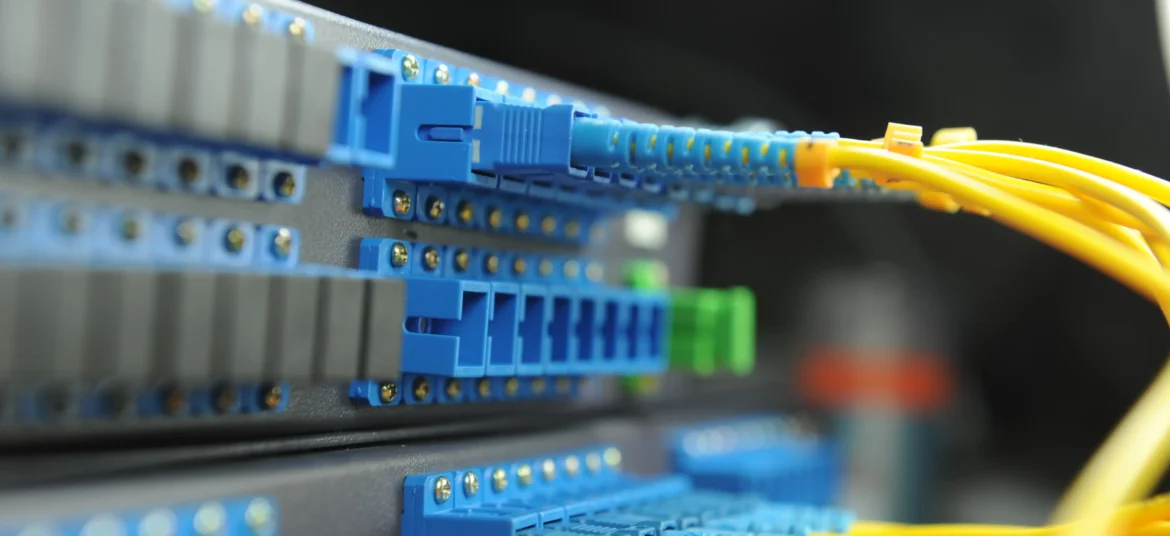
UFINET Co-Location and Data Centers: boosting connectivity through fiber optics
In the telecommunications field, co-location infrastructure and data centers emerge as fundamental elements to guarantee efficient and robust connectivity. UFINET, with its cutting-edge approach and backed by an extensive fiber optic network, is leading the charge towards faster and more reliable connectivity in Latin America.
Fiber optics as a foundational pillar
Before delving into the world of co-location and data centers, it is essential to understand the underlying pillar of this infrastructure: fiber optics. UFINET stands out by offering an extensive network of more than 100,000 km of optical fiber deployed in Latin America. Fiber optics, with its ability to transmit data using high-intensity light beams, provides the backbone for ultra-fast and reliable connectivity.
Co-Location: more than a shared space
UFINET provides co-location services in several Latin American countries, as well as in strategic international locations. This approach allows customers to place their equipment and servers in UFINET facilities, leveraging the shared infrastructure for efficiency and cost reduction. UFINET’s co-location centers meet the highest standards of reliability and security, including climate control, uninterruptible power supply, fire prevention and access control systems.
Co-location offers not only a physical space for equipment, but also the opportunity to interconnect with other operators and service providers in a highly reliable environment. This facilitates the rapid deployment of new links and provides high levels of availability for installed equipment and services.
Data Centers: the heart of digital connectivity
UFINET’s data centers represent the beating heart of digital connectivity in Latin America. With a presence in major neutral points, such as the NAP of the Americas in Miami, UFINET’s data centers offer a full range of services to support growing connectivity demands.
Fiber optics plays a crucial role in data center connectivity. By offering point-to-point connectivity services and Internet access over dark fiber, UFINET guarantees optimal performance and low latency for its customers.
Direct Cloud Connectivity: A Bridge to the Cloud
UFINET goes further by offering Direct Cloud Connectivity services, establishing direct links to provide logical connectivity to the cloud. With reach to more than 126 clouds worldwide, UFINET enables its customers to enjoy the benefits of direct and efficient connectivity to leading cloud services.
Fiber optics plays a prominent role in these direct links, ensuring fast and secure data transmission to and from the cloud. Public and private connectivity becomes a reality accessible through a single connection.
UFINET VSAT Satellite Services
In telecommunications, where connectivity is essential and solutions must be adapted to different geographical areas, VSAT satellite services have emerged as an indispensable tool. UFINET, a leader in connectivity solutions in Latin America, combines its expertise and resources to provide VSAT satellite services that overcome geographical barriers and provide reliable connectivity in remote and hard-to-reach areas.
Expanded coverage through satellites
UFINET has taken connectivity to new heights through its satellite access network based on VSAT technology. While fiber optics has been a valuable pillar in their solutions, the ability of this network to offer bi-directional connectivity is especially valuable in environments where conventional fiber-based connectivity options are limited or non-existent. This technology allows establishing data links and satellite internet with high availability and minimum latency, ranging from critical services with low traffic and latency requirements to those with higher bandwidth or internet access, highlighting the complementarity of fiber optics and VSAT technology in UFINET’s connectivity approach.
Customization for Specific Needs
Within the VSAT services offered by UFINET, customization is key. While fiber optics has been a considerable pillar in its solutions, the ability to tailor the solution to specific customer needs is a significant differentiator. This includes the optimization, design and configuration of applications and services based on the use of protocols for data, voice and video traffic, highlighting the versatility of fiber optics in UFINET’s customized approach. With two satellite HUBs strategically located in Panama and more than 1,500 remote satellite terminals in the Americas, UFINET ensures extensive and reliable coverage, integrating fiber optics as an integral part of its connectivity infrastructure.
Distinctive characteristics of UFINET VSAT services
State-of-the-Art Technological Platforms: UFINET operates with satellite data and internet connection systems using advanced platforms such as Eutelsat. These platforms guarantee optimum performance and reliability in data transmission.
Ku Band and scalabilityUFINET’s VSAT services operate in the Ku band, an efficient frequency for satellite communications. In addition, the scalable architecture allows the number of terminals in service to be expanded or reduced according to changing needs.
Efficiency in bandwidth usage: The platforms used by UFINET in VSAT services are highly efficient in the use of satellite bandwidth. This ensures optimal performance even in resource-constrained environments.
Hybrid connectivity: UFINET goes further by offering hybrid connectivity, connecting the satellite HUBs to the UFINET fiber optic network via redundant paths. This strategy allows establishing point-to-point links with a single hop, combining the best of satellite and fiber optic solutions.
Tangible Benefits of UFINET's VSAT Satellite Services
Wide coverage: Thanks to the network of remote satellite terminals and the strategic location of the HUB, UFINET offers extensive and reliable coverage, making it an excellent option for connection in remote and difficult-to-access locations.
High availability: Redundant architecture and redundant paths to the fiber optic network ensure high service availability. Customers can rely on constant and reliable connectivity.
Direct connection to the cloud: UFINET takes VSAT services to a higher level by offering the possibility of establishing direct connections to the cloud. This gives customers the flexibility to access cloud services efficiently and directly.
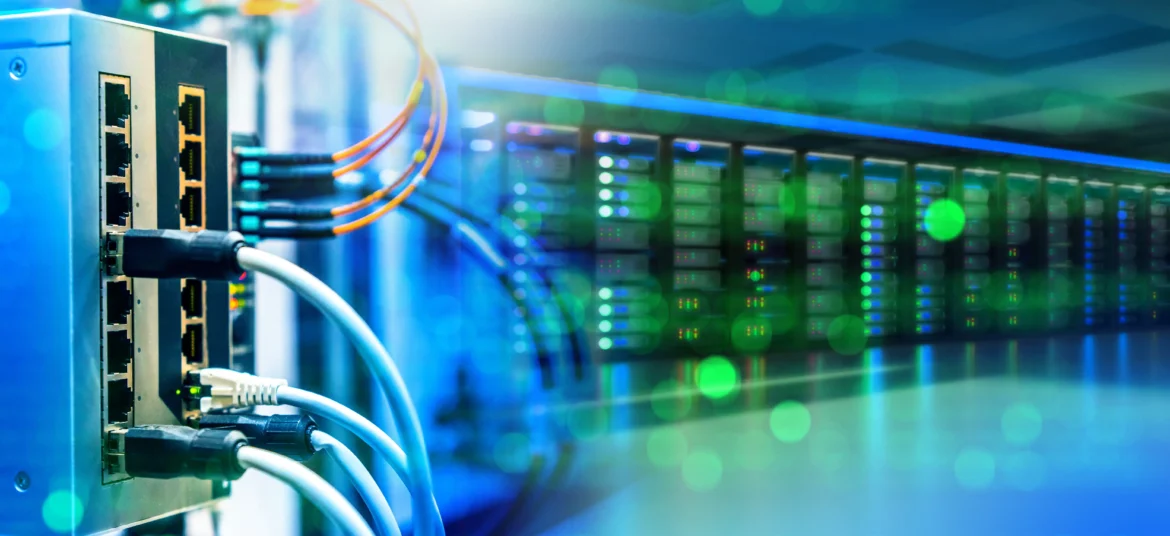
UFINET Direct Cloud Connectivity
In this time, digital demands connectivity beyond conventional boundaries, so UFINET, the leading provider of connectivity solutions through its innovative Direct Cloud Connectivity service explores, demystifies the cloud and provides a direct and efficient connection through its fiber optic network.
Connectivity without borders with Direct Cloud Connectivity
Direct Cloud Connectivity is UFINET’s answer to the growing need to access cloud services quickly and efficiently. In a world where agility and speed are imperative, this service stands out by providing a logical connection to both the public and private cloud. But how does UFINET achieve this and what is the crucial role of fiber optics?
The backbone: fiber optics in action
Fiber optics, known for its ability to transmit data through high-intensity light beams, becomes the backbone of Direct Cloud Connectivity. UFINET’s fiber optic infrastructure, which spans thousands of kilometers in Latin America, acts as a secure and efficient bridge between end users and cloud service providers.
It is important to understand that optical fiber not only facilitates fast data transmission, but also guarantees the security and integrity of the connection. The electromagnetic interference-immune nature of fiber optics ensures reliable, lossless transmission of data, which is essential in cloud environments where confidentiality and integrity are paramount.
Benefits of Direct Cloud Connectivity
Simplified Access to Over 126 Global Clouds: With Direct Cloud Connectivity, UFINET offers its customers a direct connection to a wide variety of global clouds. This means that users can access cloud services seamlessly, eliminating the complexity of multiple connections and optimizing the user experience.
Public and private connectivity: Direct Cloud Connectivity not only facilitates connection to the public cloud, but also provides private connectivity via point-to-point Ethernet through Cloud Exchange. This duality ensures that companies can choose the option that best suits their specific needs.
Connectivity reach: UFINET’s fiber optic infrastructure guarantees public connectivity reach through the Internet and private connectivity reach through point-to-point Ethernet connections. This ensures that customers are just one connection away from the cloud, regardless of their location.
It is important to understand that optical fiber not only facilitates fast data transmission, but also guarantees the security and integrity of the connection. The electromagnetic interference-immune nature of fiber optics ensures reliable, lossless transmission of data, which is essential in cloud environments where confidentiality and integrity are paramount.
Powerful tools for connectivity management
Local and Remote Connection:
Direct Cloud Connectivity offers the flexibility of local connection via hosting in Miami, as well as remote connections accessible from Miami with links at remote datacenters. This versatility ensures that customers can tailor their connectivity to their specific needs.
Connectivity with Major Cloud Providers:
UFINET has established direct connections to major cloud providers, including Amazon Web Services, Google Cloud Interconnect, Microsoft Azure ExpressRoute, and others. This means that customers can take advantage of the cloud’s capabilities without restrictions.
Switching Flexibility: With Direct Cloud Connectivity, UFINET simplifies the switching process. Superior cloud and technology services are available through a single connection, allowing customers to change or upgrade providers with ease.
In a world where speed and agility are essential, Direct Cloud Connectivity emerges as a crucial element for businesses looking to move into the future with borderless connectivity.
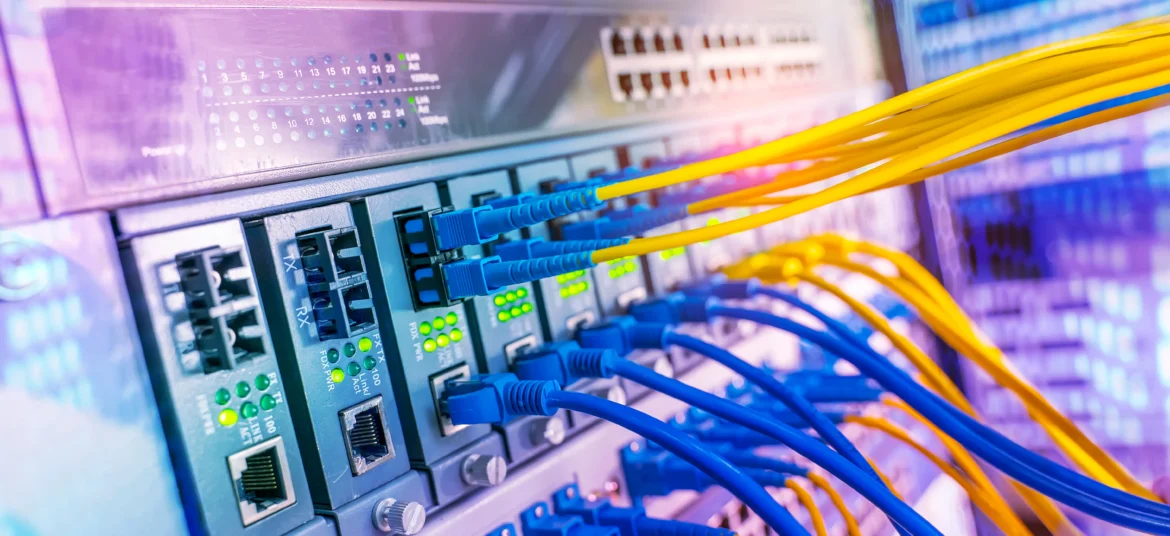
Technological trends in Internet distribution
Internet distribution has evolved by leaps and bounds, and in this digital age, technology trends play a key role in how we access and experience connectivity. At the heart of this revolution is fiber optics, a technology that has not only transformed network infrastructure, but has also paved the way for a faster, more efficient and connected digital future.
Fiber Optics: The Backbone of 21st Century Connectivity
Fiber optics has established itself as the backbone of Internet distribution, especially for ISPs (Internet Service Providers). The ability to transmit data through high-intensity light beams distinguishes it as the preferred choice for addressing the growing bandwidth demands of an increasingly digital world.
Advantages of fiber optics
Incredible speed: Fiber optics provides much faster transmission speeds compared to traditional technologies. This translates into a seamless user experience, faster downloads and instant response.
Unlimited bandwidth: The ability of optical fiber to carry large amounts of data simultaneously ensures virtually unlimited bandwidth. This is essential in a world where the demand for high quality streaming, video conferencing and cloud-based applications continues to grow.
Reliability and stability: Unlike copper connections, optical fiber is not affected by electromagnetic interference or adverse weather conditions. This guarantees a stable and reliable connection at all times.
Low latency: Fiber optics minimizes latency, the time it takes for a data packet to travel from one point to another. This is essential for real-time applications such as online games, video conferencing and remote control systems.
Technology trends that power Internet distribution
FTTH (Fiber to the Home) networks: Deployed by leaders such as UFINET, FTTH networks bring fiber optics directly into homes, providing amazing speeds and robust connectivity for end users.
5G and fiber optics: The implementation of 5G networks perfectly complements fiber optics to deliver ultra-fast speeds and enhanced capacity. This synergy enables smoother and more efficient mobile experiences.
Internet of Things (IoT): The growing adoption of IoT devices, from smart home appliances to industrial sensors, requires reliable, high-speed connectivity. Fiber optics is positioned as the ideal infrastructure to support this technological revolution.
Edge Computing: The decentralization of computing, known as edge computing, drives the need for low-latency connectivity. The combination of fiber optics with edge architectures enhances the rapid delivery of services and applications.
Benefits of adopting these trends
Improved user experience: The above technology trends provide an unparalleled user experience, with fast speeds, lower latency and reliable connectivity.
Boosting Business Innovation: The adoption of these technologies enables companies to innovate and offer advanced services that leverage the power of robust and efficient connectivity.
Market Competitiveness: ISPs that embrace these trends stand out in the market by offering state-of-the-art connectivity solutions, attracting more customers and consolidating their competitive position.
Preparing for the Future: In an ever-evolving digital world, early adoption of these trends ensures that companies are prepared for the demands of the future, where fast and reliable connectivity based on fiber-optic technology is essential. Fiber optics becomes a fundamental element to guarantee fast and reliable connectivity in the future scenario.
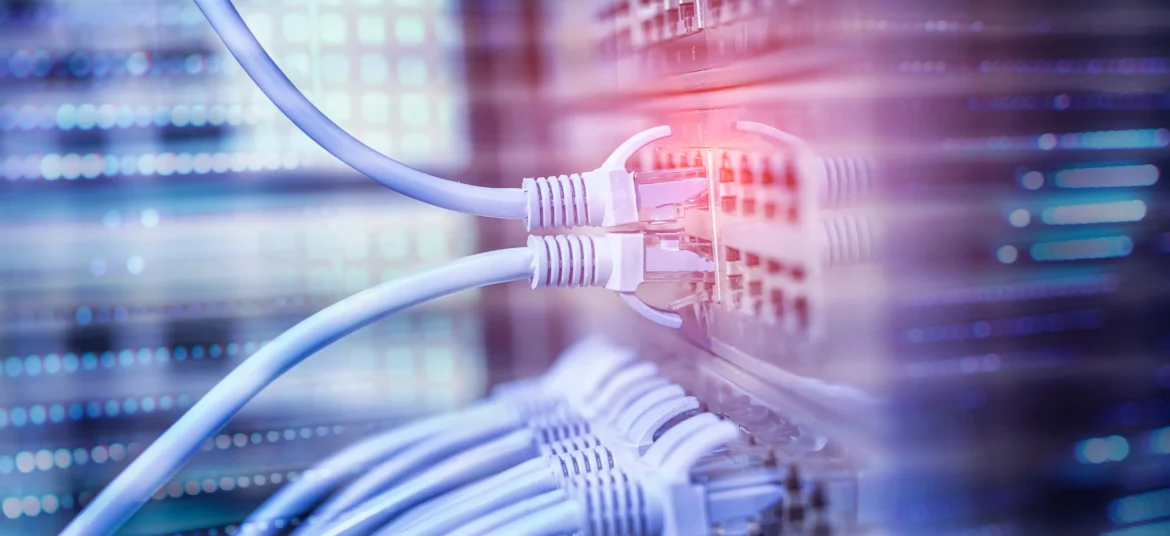
Environmental aspects and sustainability in FTTH networks: weaving a green future with fiber optics
Technological developments, particularly in the area of fiber optic networks (FTTH), have not only transformed the way we connect, but have also raised concerns about their environmental impact. In this context, it is imperative to explore the environmental aspects and sustainable practices associated with FTTH networks, recognizing the central role of optical fiber and its relationship with environmental preservation.
Fiber optics and its environmental contribution
Fiber optics, unlike traditional copper technologies, stands out for its eco-friendly approach in several dimensions.
Energy efficiency:
FTTH networks, based on optical fiber, are known for their energy efficiency. As information is transmitted through light beams instead of electric currents, energy loss is significantly reduced. This translates into lower electricity consumption, marking a step towards sustainability compared to conventional technologies.
Durability and recyclability:
Optical fiber is inherently durable and resistant to adverse environmental conditions. Their extended service life minimizes the need for frequent replacement, thus reducing the generation of electronic waste. In addition, optical fiber is recyclable, contributing to the reduction of waste and the promotion of more sustainable practices in technology management.
Carbon footprint reduction:
The deployment of FTTH networks means less need for repeaters and amplifiers, as fiber optics can transmit signals over considerably greater distances without loss of quality. This translates into less equipment and, therefore, a decrease in the carbon footprint associated with the network infrastructure.
Sustainable strategies for FTTH network implementation
Efficient waste management:
Leading companies, such as UFINET, recognize the importance of efficient e-waste management, including in the context of fiber optics. Implementing recycling programs and adopting proper disposal practices ensures that fiber-basedFTTH network components are treated responsibly at the end of their useful life. Optical fiber, being an essential component in FTTH networks, also benefits from these responsible e-waste management practices.
Responsible use of resources:
Careful infrastructure planning and optimization of fiber optic routes can minimize the need for new deployments and reduce interference with sensitive natural environments. The planning of cable laying, taking into account the topography and local ecology, contributes to the preservation of green areas and biodiversity.
Renewable energies in data centers:
Data centers associated with FTTH networks can adopt renewable energy sources to power their operations. Integrating solar panels, wind turbines or other clean sources into the infrastructure supports the commitment to sustainability and reduces dependence on non-renewable energy sources.
Challenges and opportunities
Although FTTH networks based on optical fiber present significant environmental advantages, they are not without their challenges. Initial fabrication of fiber optic components can be resource intensive, and installation of the infrastructure can temporarily impact the environment. However, these challenges can be mitigated through responsible practices and innovative approaches.
Challenges
Initial resource consumption:
The manufacture of fiber optic components, despite their durability and recyclability, may require an initial consumption of resources. Optimizing production processes and exploring more sustainable materials are key to mitigating this challenge.
Temporary impact on the environment:
The installation of FTTH infrastructure may have a temporary impact on the local environment. Excavations and cable deployment can disturb the local ecology. Strategies such as environmental planning and post-installation restoration are essential to minimize these impacts.
Electronic waste management:
Although optical fiber is recyclable, proper management of e-waste associated with network equipment is an ongoing challenge. Companies should establish robust recycling policies and collaborate with specialized agencies to ensure proper disposal.
Opportunities
Innovation in materials:
Ongoing research into new materials for fiber optic components can lead to more sustainable solutions. The adoption of recycled materials and the search for environmentally friendly alternatives are driving innovation in manufacturing.
Collaboration with local communities:
Involving local communities in the planning and implementation of FTTH projects can turn challenges into opportunities. Transparency in communication and consideration of local concerns foster a more harmonious implementation.
Renewable Energy Research:
Exploring and adopting renewable energy sources to power FTTH network operations represents a key opportunity. The integration of solar, wind or other clean energy sources can reduce the carbon footprint of infrastructure.
Towards a sustainable future
Addressing these challenges and taking advantage of the opportunities requires ongoing collaboration between industry, regulators and local communities. The implementation of sustainable practices at all stages, from manufacturing to final disposal, is critical to ensure that FTTH networks contribute positively to environmental sustainability.
Ultimately, overcoming these challenges and capitalizing on the opportunities will not only strengthen the foundation of FTTH networks, but also lay the groundwork for a more sustainable and responsible digital transformation. Fiber optics, in its central role, remains the key to weaving a future where connectivity and sustainability coexist harmoniously.
Securing the connectivity of the future
As fiber optic networks consolidate as the backbone of modern connectivity, the implementation of effective security strategies becomes imperative. These strategies not only protect the integrity of the network, but also guarantee the confidentiality and availability of the information transmitted through the optical fibers.
Data encryption:
Data encryption is essential to safeguard the information transmitted over fiber optic networks. The implementation of strong encryption protocols, both at the network and application level, ensures that data is incomprehensible to any unauthorized entity attempting to access it.
Physical security:
Protecting the physical infrastructure of the network is a crucial part of the security strategy. This includes the installation of surveillance cameras at key points, access control to the facilities and the implementation of security measures against intrusions to prevent any intentional damage.
Intrusion detection:
The implementation of intrusion detection systems makes it possible to quickly identify and respond to any unauthorized access attempt. These systems can monitor unusual traffic patterns and suspicious activity, triggering alerts for immediate action.
Continuous updates and patches:
Keeping the network infrastructure up to date with the latest security patches and updates is essential. This ensures that any known vulnerabilities are addressed quickly, reducing the chances of exploitation by cyber threats.
Protection against DDoS attacks:
Distributed Denial of Service (DDoS) attacks can adversely affect network availability. Implementing DDoS mitigation systems helps to counter these attacks, ensuring that the fiber optic network continues to operate without interruption.
Education and awareness:
Involving users and staff in safety education programs is a valuable preventive strategy. Raising awareness of safe practices in everyday network use helps reduce the risk of falling into security traps.
Data backup and recovery:
Implementing data backup and recovery plans ensures that, in the event of a security incident, services can be quickly restored. This minimizes the impact and loss of critical data.
The implementation of fiber optic technology in Internet distribution, led by UFINET, redefines the connectivity landscape in Latin America. With passive and active FTTH models, UFINET offers flexible and efficient solutions for operators, highlighting the importance of optical fiber in both approaches. The strategic choice between cost efficiency and management simplicity reflects UFINET’s comprehensive vision. Optical fiber, with its ability to transmit data through high-intensity light beams, stands as the central component in the delivery of end-to-end FTTH services. Ultimately, the combination of innovative technology and adaptable network models consolidates UFINET as a leader in the evolution of fiber optic networks in the region.
